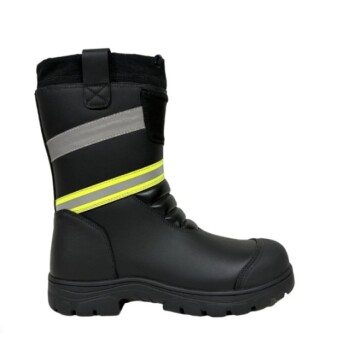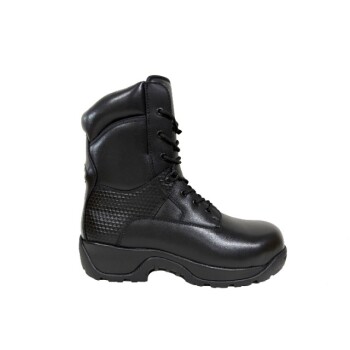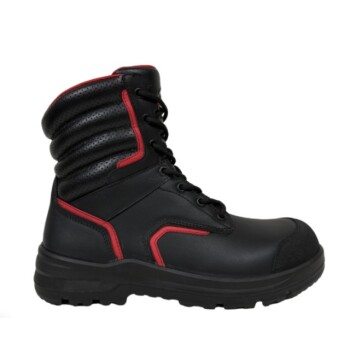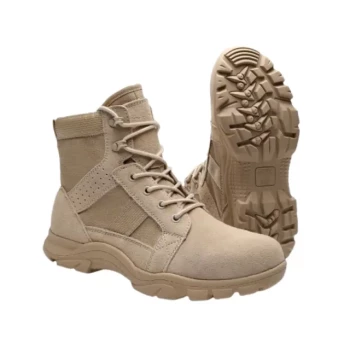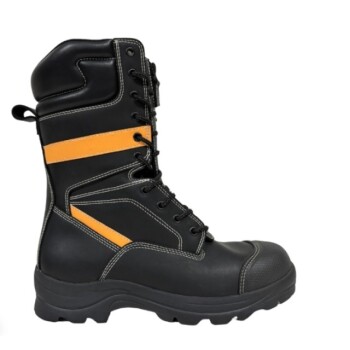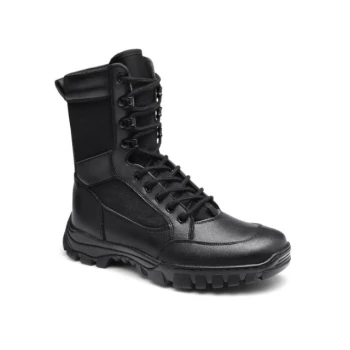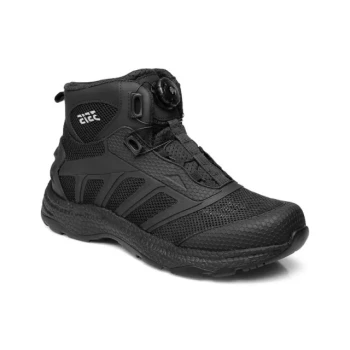The pronounced heel on a fire boot is a critical, purpose-driven design feature engineered for firefighter safety and operational stability. It serves two primary functions: providing a secure anchor on ladders and equipment, and enhancing stability and traction on steep or unpredictable terrain.
The heel is not an aesthetic choice; it is a critical safety tool. It acts as a physical stop to prevent a firefighter's foot from slipping through ladder rungs and provides essential grip and braking power on the hazardous ground they navigate.
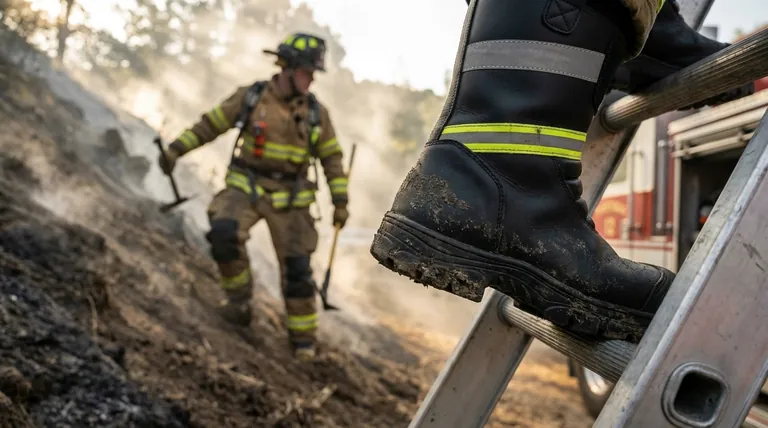
The Critical Role of the Heel in Firefighting
A firefighter's environment is inherently unstable, whether they are climbing a ladder high above the ground or navigating the ash-covered slope of a wildfire. The boot's heel is designed to mitigate these specific dangers.
Enhancing Stability on Unstable Ground
For wildland firefighters, the terrain is a constant adversary. A raised heel digs into soft or uneven ground, such as dirt, mud, or loose debris.
This design provides crucial braking action when descending steep inclines and offers a more secure anchor point when climbing. It significantly improves a firefighter's stability, reducing the risk of slips and falls while carrying heavy equipment.
Preventing Slips on Ladders and Equipment
In structural firefighting, ladders are a daily tool. The heel is designed to lock onto ladder rungs, preventing the foot from sliding forward and potentially through the rung.
This "locking" mechanism is a vital safety feature that provides a secure foothold when climbing, descending, or working from a ladder. This same principle applies to the stirrups and steps on fire apparatus, ensuring safe entry and exit from the vehicle.
Providing Essential Arch and Ankle Support
Firefighters spend long, grueling hours on their feet, bearing the weight of heavy personal protective equipment. The rigid structure of a boot, including its heel and shank, provides critical arch support.
This support helps distribute weight more evenly across the foot, reducing fatigue and lowering the risk of musculoskeletal injuries over a long career.
Understanding the Design Trade-offs
While essential, the design of the heel involves balancing competing needs. The ideal heel height and shape depend on the firefighter's primary role.
The "Logger" Heel vs. a Lower Profile
Wildland firefighting boots often feature a very high, stacked "logger" heel. This aggressive design is optimized for maximum traction and braking power on steep, natural terrain.
However, this same heel can feel cumbersome and less agile during structural firefighting tasks, such as running on flat surfaces or navigating tight interior spaces.
Stability vs. General Mobility
Boots designed primarily for structural or station use often have a more moderate, right-angled heel. This provides the necessary safety for climbing ladders and equipment but offers better all-around mobility and comfort on pavement and floors.
The key is matching the boot's design to the most common tasks and environments the firefighter will face.
Making the Right Choice for Your Role
The boot's heel is a functional component that should align directly with your operational needs.
- If your primary focus is wildland firefighting: A taller, more aggressive logger-style heel is non-negotiable for stability and safety on treacherous terrain.
- If your primary focus is structural firefighting: A well-defined, 90-degree heel is a critical safety feature for secure footing on ladders and apparatus steps.
- If you work in a hybrid or all-hazards role: Seek a boot with a moderate heel that provides a versatile balance of ladder security and walking comfort for varied duties.
Ultimately, the heel on a fire boot is a deliberate engineering choice that directly enhances a firefighter's safety and effectiveness in the field.
Summary Table:
| Heel Type | Primary Function | Best For |
|---|---|---|
| Logger Heel | Maximum traction & braking on steep slopes | Wildland Firefighting |
| 90-Degree Heel | Secure footing on ladders & apparatus | Structural Firefighting |
| Moderate Heel | Balance of ladder security & walking comfort | Hybrid / All-Hazards Roles |
As a large-scale manufacturer, 3515 produces a comprehensive range of safety footwear for distributors, brand owners, and bulk clients.
Are you sourcing high-performance fire boots engineered for real-world safety challenges? Our production capabilities encompass all types of professional boots, including specialized designs with purpose-built heels for wildland, structural, and all-hazards firefighting.
Contact our expert team today to discuss your specific needs and discover how we can deliver reliable, high-quality footwear for your customers.
Visual Guide
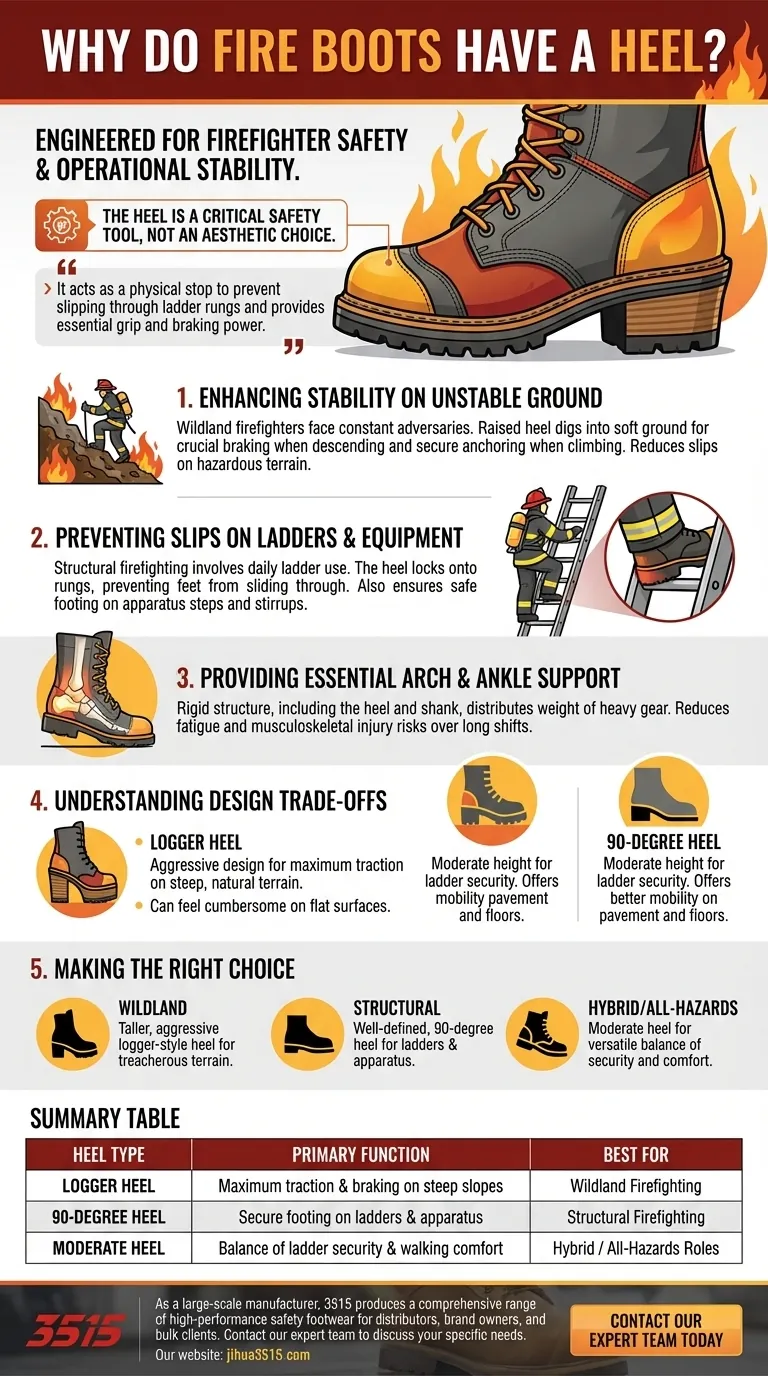
Related Products
- High Performance Fire-Retardant Waterproof Safety Boots
- Safety Footwear Wholesale Manufacturer for Custom OEM/ODM Production
- Wholesale Waterproof Tactical Boots Custom Suede & High-Traction Soles
- Durable Leather Tactical Boots Wholesale & Custom Manufacturing for Brands
- Premium Grain Leather Safety Boots for Bulk Supply
People Also Ask
- How should one choose between steel toe and composite toe shoes? Match Your Work Hazards for Optimal Safety
- When are steel-toe boots required or recommended? Essential Guide to Workplace Foot Safety
- How can comfort be improved when wearing steel toe boots? A Guide to Pain-Free Workdays
- Why choose steel toe boots over composite? For Maximum Impact Protection & Durability
- What are the main types of safety-toe boots? Choose the Right Protection for Your Job
